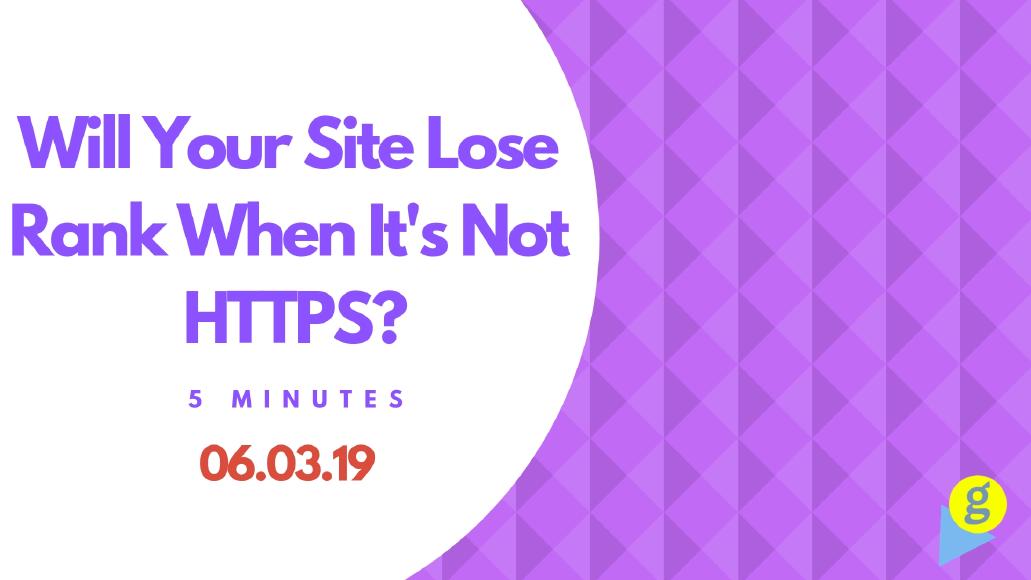UPDATE: 26th March 2019 Apple have just updated the Safari browser which now shows all HTTP websites as ‘NOT SECURE’. That now represents around 80% of online visitors will now be influenced with negative messages, deterring could be customers from websites running HTTP.
Occasionally, you’ll see certain websites have a green padlock to the left of their domain in your Browsers address bar. You’ll see that our website has one. What does it mean to have this icon to the left of your domain in your customers browsers and how exactly do you get it? Let’s start with what in actual hades HTTP is and what exactly that ‘S’ at the end signifies. HTTPS stands for Hypertext Transport Protocol Security and describes the protocol essential for protecting websites against a variety of technical attacks. Successful impementation of HTTPS will ensure your website visitor activities cannot be tracked or personal information stolen using strong levels of Encryption, Data passed back and fourth between the visitor and your site cannot be tampered with and allows visitors to authenticate freely, without the risk of someone narferious stepping inbetween the two and stealing them..
What is the overall impact of HTTPS?
Here’s a visual for some quick facts about secure sites, but keep reading for more details!

More than just onsite content can have a positive impact on your rankings, traffic, and, potentially, conversions. One of these factors is website security.
Rankings
Google is always publishing new updates to it’s ranking algorithm (you don’t become the goliath-monopolist without innovating) but in 2014, it released a version which favoured HTTPS websites over non-HTTP ones. Back then, it was a lightweight component within the overall ranking algorithm and HTTPS sites experienced only a minor ranking increase. Fast-forward to 2018 and Google have seriously signalled that this will become a significantly larger portion of their ranking methodology.
Even as recently as 2015, Google have publicly stated that their HTTPS ranking boost may serve as a tie breaker if the quality signals for two different search results are equal in everything else. meaning, if your website is describing a similar service in the same way, loading as equally fast and publishing fresh content on a regular basis then Google might decide to rank your competitor higher simply because it has HTTPS running under the hood.
At last count, less than 1% of all websites are ‘secure’ and 40% of Google page one results are running an HTTPS site . Tremendous! Google Has encouraged webmaster to tmake the migration to a secure sit for a while now and has been giving an increasing amount of weight in ranking boosts to websites that are HTTPS. Keep in mind, those site rankings on page one of Google are also likely following many other best practices in order to gain and retain their valued page one real estate, so it’s not a total surprise that of those ranking on page one, more are following Google’s heavy suggestion toward having a secure site. Interestingly, in a study conducted by Brian Dean, SEMRush, AHrefs, SimilarWeb and MarketMuse, a moderate correlation between HTTPS and higher search rankings was found. other studies have found minor correlation as well - but combined with other factors and reflecting what Google had already confirmed (it may act as a tie breaker, but not a major ranking factor).
Traffic
Better rankings can lead to more traffic (the more people see your site, the more visitors you’ll get). Also, when users are looking at the search results, they may see a secure site as a signal of trust and authority and click that website over another, non-secure site, thus improving your site’s click-through-rate.
Conversions
Users trust secure connections more — it’s a fact (and sites that follow best practices for user experience are more likely to rank better in Google search results). According to a GlobalSign survey, 84% of users would abandon a purchase if data was sent over an insecure connection , and a large majority are concerned about their data being intercepted or misused online. If a customer came into your store and voiced a concern about something, you would do everything you can to alleviate that concern and create not only a loyal customer but a raving fan. Why shouldn’t it be the same online—where an overwhelmingly large majority of users shop and search for home services? Make your customers and prospects feel safe and give them peace of mind, whether it’s in your store or on the internet.
Google Chrome will start labeling sites as NOT SECURE
Also, get this: Chrome is going to start making it really obvious when a website isn’t secure. Right now, the URL bars of HTTP sites look like this:

chrome-http-notification
Not so bad, right?
But eventually, Chrome will eventually label all HTTP pages as non-secure, and will change the HTTP security indicator to the red triangle used for broken HTTPS when users enter text into a form on an HTTP page, and for all HTTP pages in incognito mode. The new warning is part of a long term plan to mark all pages served over HTTP as “not secure.” It ain’t going to be subtle:

chrome-not-secure-warning
Now with over 60% of internet users choosing to use Google Chrome , these warnings will disrupt your potential customers behaviour. If I’m on a website with that indicator, especially an eCommerce site, you better believe I’m not staying! Would you? I’m willing to bet not, and other users will most likely feel the same way.
Be Proactive & Act Now: Get Your Website Secured
So while at this current moment the SSL SEO impact isn’t overwhelmingly negative (having a secure site won’t make or break your rankings), things seem to be moving in that direction. Google’s Webmaster Blog hints at a fully secure web in the future: “As migrating to HTTPS becomes even easier, we’ll continue working towards a web that’s secure by default.” That’s from a post a couple months ago! Be proactive about website security rather than reacting to it later down the road when you’re already behind the competition because it’s the new norm.


